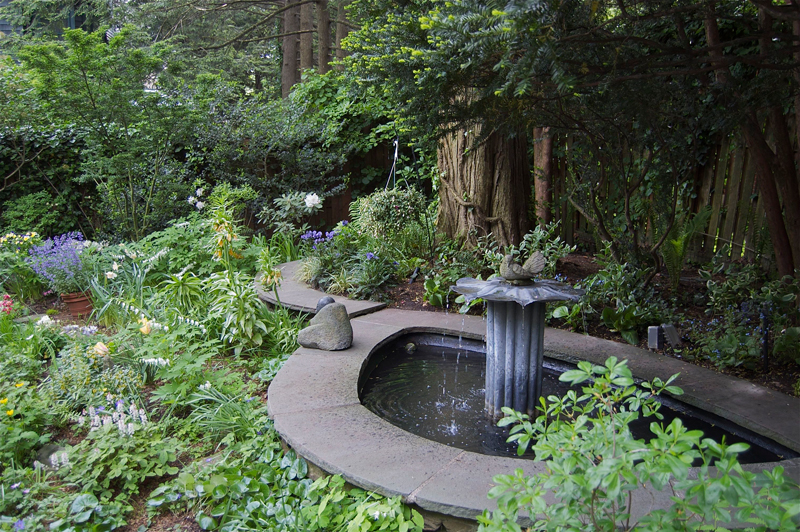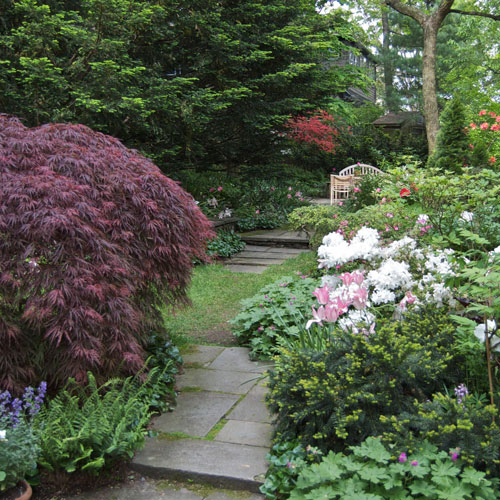Schoolyard gardens, private gardens, community garden plots are all are important sites for growing, educating, cooling, and adding much needed green space in Cambridge. CP&GC has preserved gardens that no longer exist in our community, falling victim to property renovations.
The Hill Garden
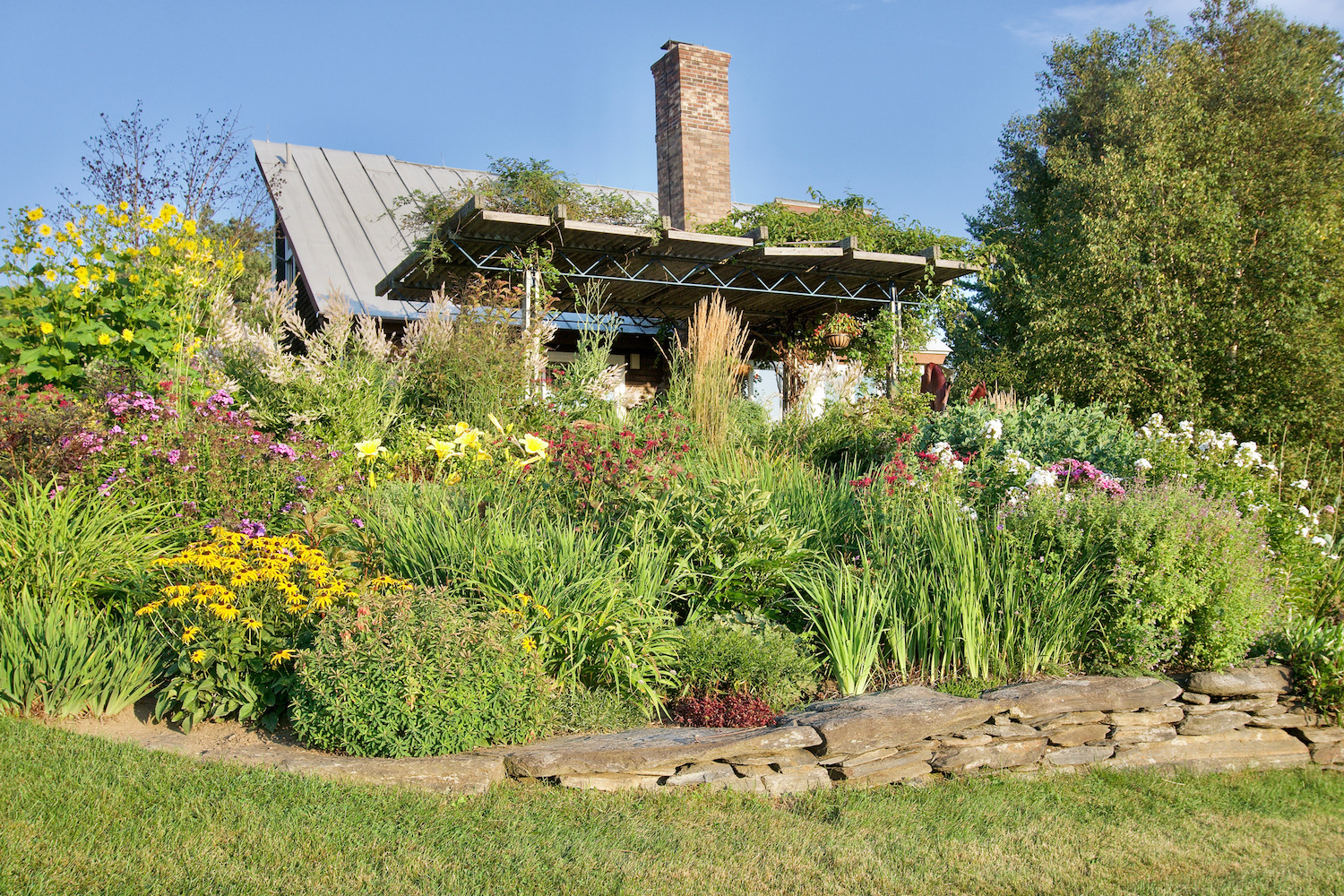 The Hill Garden surrounds the Vermont summer home of Cambridge resident and long-term beloved member of the Cambridge Plant & Garden Club. The garden is typical of an English-Style Country Garden, filled with a riot of plant textures, colors, and sizes. Situated on a hillside, on a property of 100 acres, The Hill Garden is ideally located with magnificent views of the Vermont mountains, providing a lush backdrop and sense of country space.
The Hill Garden surrounds the Vermont summer home of Cambridge resident and long-term beloved member of the Cambridge Plant & Garden Club. The garden is typical of an English-Style Country Garden, filled with a riot of plant textures, colors, and sizes. Situated on a hillside, on a property of 100 acres, The Hill Garden is ideally located with magnificent views of the Vermont mountains, providing a lush backdrop and sense of country space.
The garden’s owner and creator is a landscape architect, professional photographer, and knowledgeable horticulturalist. The Hill Garden is entirely of her own design, and in the almost 50 years she has worked on it, it has evolved considerably, with the addition of retaining walls and terraced beds; and a large stone terrace with dining table and chairs built facing north towards the mountains. The many perennial beds burst with flowers in all seasons—phlox, daylilies, bearded iris, asters, herbaceous peonies, climbing roses, hydrangea, and native wisteria. New varieties are added every year to the lilac bush alee; small ephemerals and miniature hostas frame the front steps of the house.
While the garden owner’s judicious use of plants, their abundance of form, the richness of their color and texture gives The Hill Garden its unique character and energy, it is the love of a lifetime’s work that has gone into every inch and flower that makes this garden and its creator such a treasure.
For more photographs and information on the garden, here is the link to the report that CP&GC submitted to the Smithsonian.
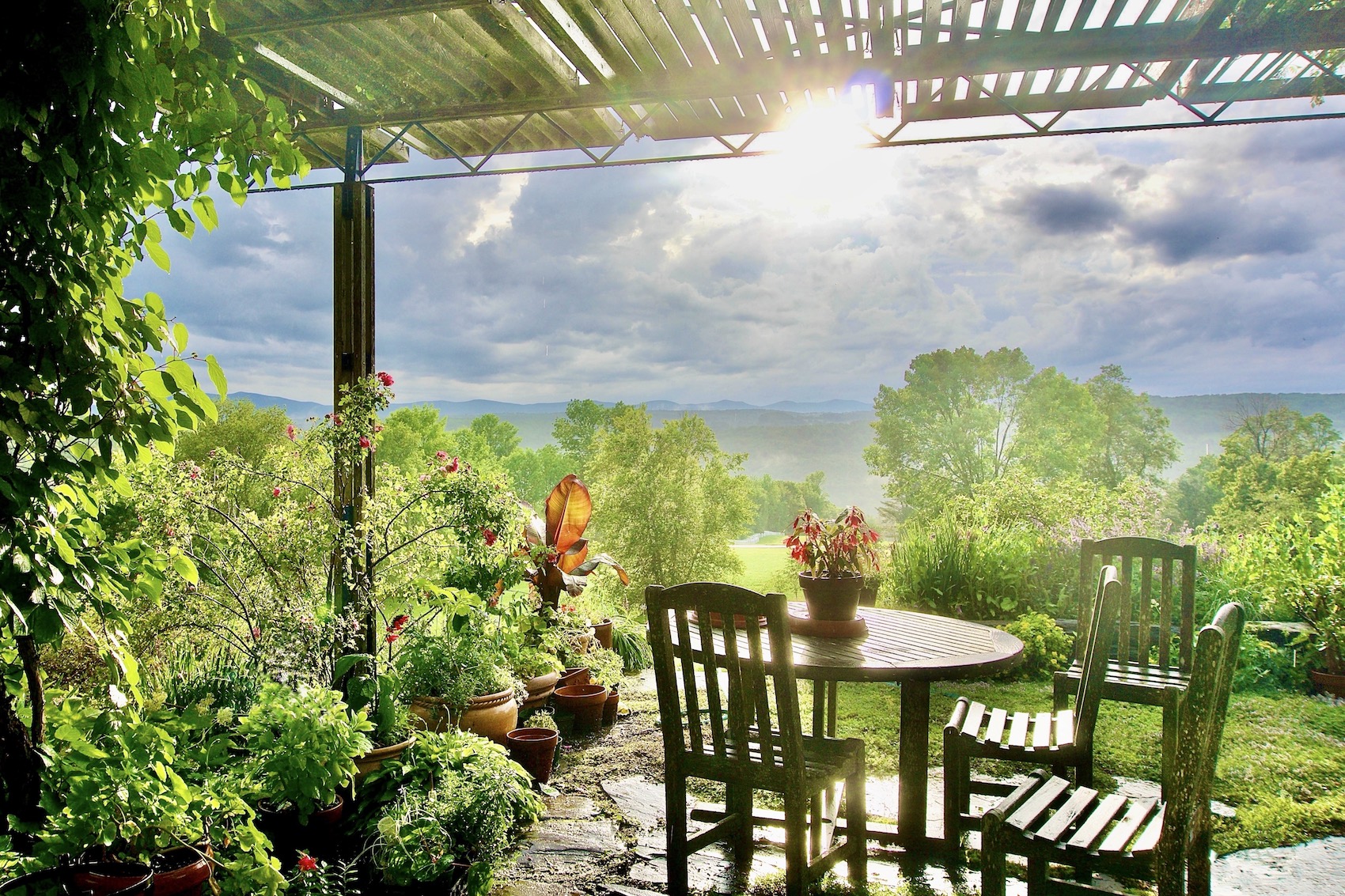
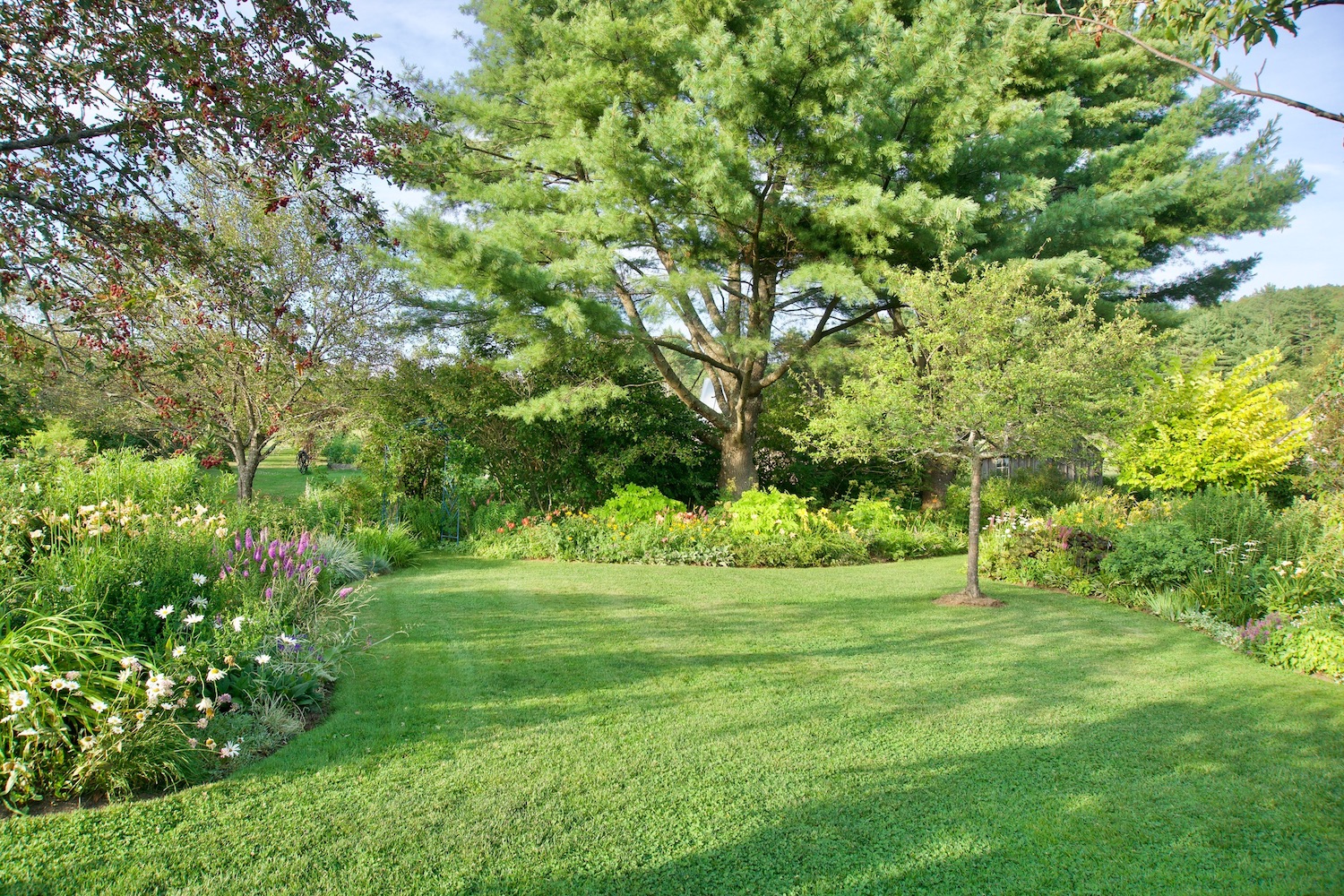
Avon Hill Garden
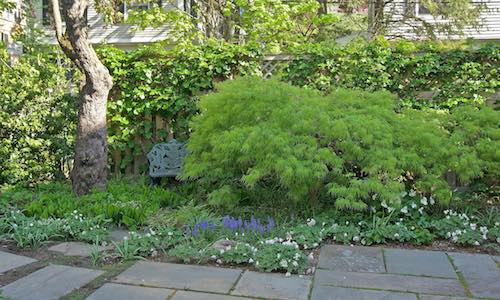 The Avon Hill Garden embraces the 1887 house on three sides and is divided naturally into three areas. From the front gate, a bluestone walkway draws the visitor from relatively public to more private. Along the way, choice plants, many diminutive, reveal themselves as hidden delights. Though small in size, the garden feels much larger.
The Avon Hill Garden embraces the 1887 house on three sides and is divided naturally into three areas. From the front gate, a bluestone walkway draws the visitor from relatively public to more private. Along the way, choice plants, many diminutive, reveal themselves as hidden delights. Though small in size, the garden feels much larger.
Created over 30 years, an enormous amount of thought and experience as well as refined taste have informed the creation of this garden. However, one is hardly aware of design in a formal sense. The garden’s design follows not from a drawing board, but from the use of planting natural to the New England landscape and seasons. With sensitivity to form, texture, scent, color and timing, the owners have succeeded in layering plants that provide continuing delight from early spring through late fall. The variety of ground covers, the way certain flowering varieties seem almost hidden while others with a stronger palette reach for the sun, and above all, an underlying structure provided by repetition and contrast of leaf forms and greens, create a garden notable for both detail and drama.
For more photographs and information on the garden, here is the link to the report that CP&GC submitted to the Smithsonian.
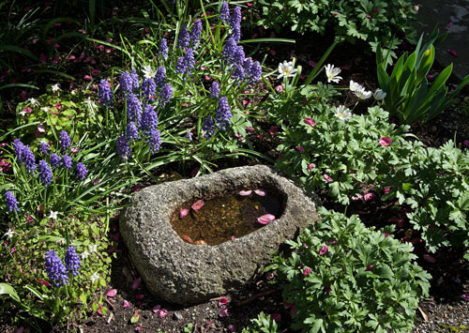
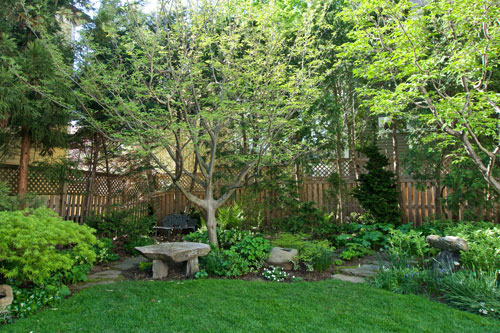
Brattle Street Garden
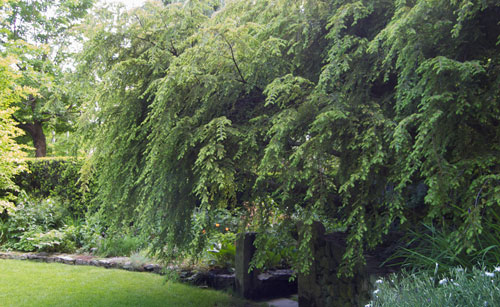
This large urban garden defined by a dynamic sequence of linked spaces or rooms, is filled with a riot of colors and textures that reflect the architect owner’s sensitivity to design as well as his love and extensive knowledge of plants. The gardens are filled with a great variety of specimen trees, shrubs, and herbaceous material tucked everywhere, along with sculptures, fountains, stonewalls, and wood fences. An undulating stone wall frames both lawn with plant beds.
In one bed, a pruned Japanese maple dominates a bowed space. The subtle contouring of plant beds related to the surrounding stone wall and wood fence creates the sense of a deep sunken garden that is extremely private. Low flower beds line two sides of this space and here bergenia, peonies, thalictrum rochebrunianum, lilies, digitalis and poppies grow in profusion.
For more photographs and information on the garden, here is the link to the report that CP&GC submitted to the Smithsonian.
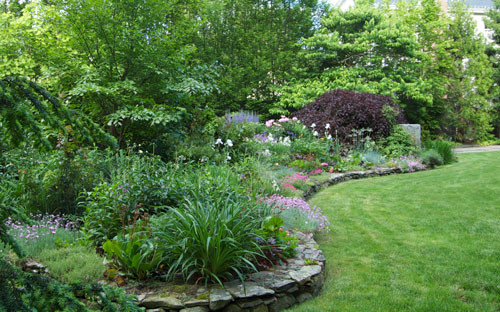
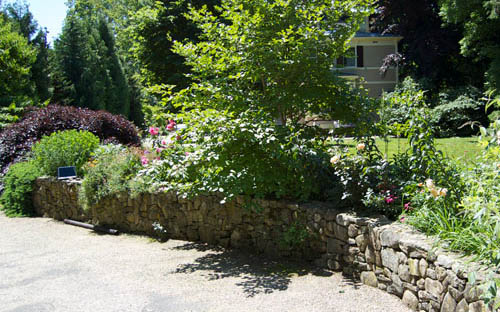
Brown Street Garden
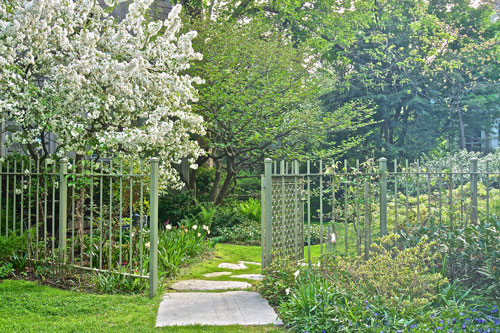 The Brown Street Green Garden is the creation of a Cambridge garden designer and evolved for over six decades. A lovely informal, green and textured spot, it is the expression of the owner’s commitment to informal naturalistic design, her knowledge and love of plants (especially trees and flowering shrubs), and her friendships with other gardeners and with contractors who helped her to build the garden and provided materials. Each paver, planter and sculpture has a story to tell. The garden is noncompartmentalized, but has three distinct areas: the entry borders, the terrace and lawn, and the wildflower garden. The spirit of each works due to the artistic choice, height, massing, and type of plant material; the variety and punctuation of garden ornament; the salvage and design of garden furniture which suggest an indoor/outdoor life style; and the flowing transitions and changing views and vistas. Essentially this is a garden of a time when owners had a love of elegant understated gardens which they designed and maintained.
The Brown Street Green Garden is the creation of a Cambridge garden designer and evolved for over six decades. A lovely informal, green and textured spot, it is the expression of the owner’s commitment to informal naturalistic design, her knowledge and love of plants (especially trees and flowering shrubs), and her friendships with other gardeners and with contractors who helped her to build the garden and provided materials. Each paver, planter and sculpture has a story to tell. The garden is noncompartmentalized, but has three distinct areas: the entry borders, the terrace and lawn, and the wildflower garden. The spirit of each works due to the artistic choice, height, massing, and type of plant material; the variety and punctuation of garden ornament; the salvage and design of garden furniture which suggest an indoor/outdoor life style; and the flowing transitions and changing views and vistas. Essentially this is a garden of a time when owners had a love of elegant understated gardens which they designed and maintained.
For more photographs and information on the garden, here is the link to the report that CP&GC submitted to the Smithsonian.
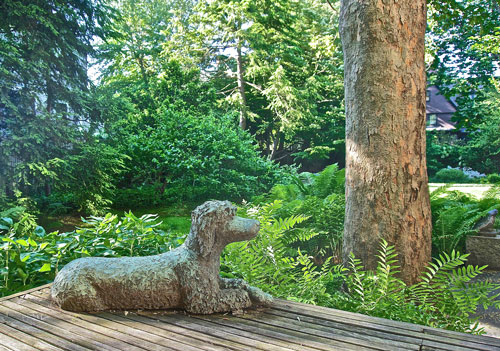
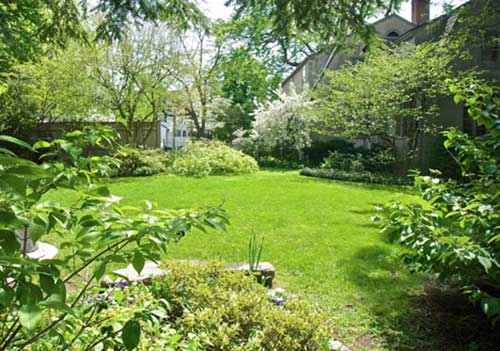
Garden Street Garden
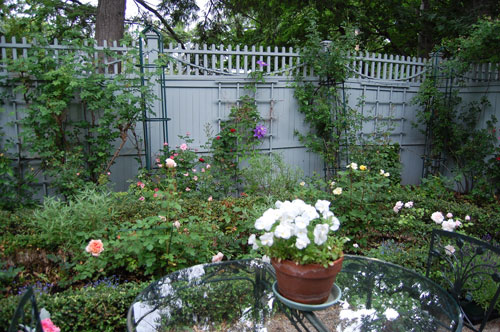
The Garden Street Garden is inspirational for its complexity and attention to form, history, and beauty. It was created by the combined talents of an American architect who spent his formative years in France and his wife, an Englishwoman of great horticultural experience. Drawing on French and Italian traditions of structure and formality and the English horticultural tradition of interconnected garden rooms and successive waves of abundant planting, they have created one of the most significant gardens in Cambridge.
Surrounding a beautifully sited colonial revival house, the garden is in a quiet cul-de-sac off a busy Cambridge street. Integral to the beauty and restraint of the garden is its use of fencing, all designed by the architect. Hedges of yew, lilac, viburnum, and hibiscus create “walls” for the series of garden rooms, which include a circle garden, the east and west gardens, a front garden, and a rose garden. White has been chosen as the unifying theme with two specific color palettes, white, blue and pink for the formal East Garden, with white, blue and yellow dominating in the spring.
For more photographs and information on the garden, here is the link to the report that CP&GC submitted to the Smithsonian.
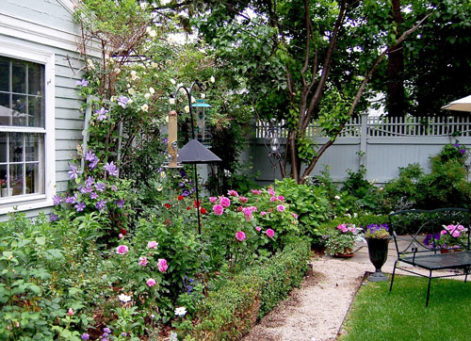
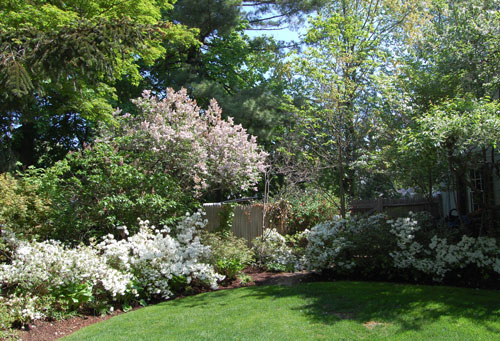
Morse School Garden, Cambridge Public Schools
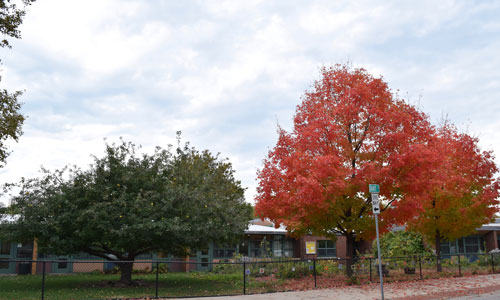
The Morse School Garden is a vibrant example of the schoolyard garden movement in an urban setting community. The goal of this movement, which began in the late 1990s, is to give children an introduction to the world of agriculture. A school garden helps children connect to this world by encouraging them to talk, ask questions, to make predictions, and to learn new vocabulary. At the Morse School, the garden is incorporated into teachers’ lessons through CitySprouts, a nonprofit school garden program in the Cambridge’s public schools.
The Morse School Garden has a strong connection to the community and neighborhood: it is located adjacent to and completely within view of the surrounding neighborhood, set at street-level, with no raised walls and very accessible to parents and children. It essentially looks like a garden that children have created, with very simple layout and materials and signage, with plant beds and lawn areas that are informal in shape and appearance. The Morse School Garden is constantly evolving. It is a laboratory of experiments, always changing.
For more photographs and information on the garden, here is the link to the report that CP&GC submitted to the Smithsonian.
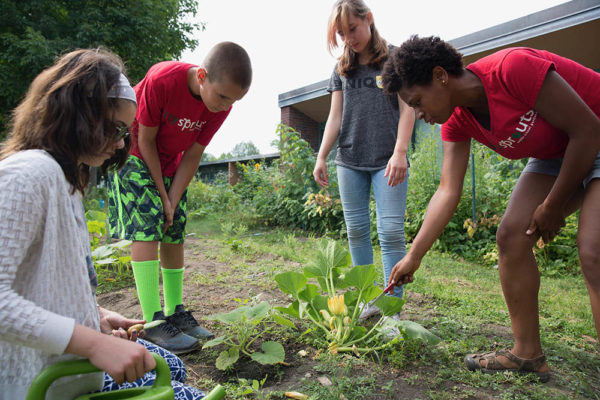
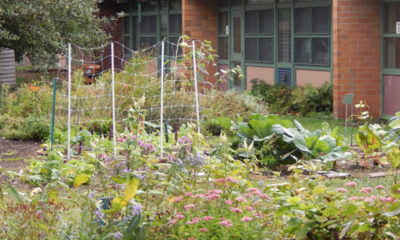
Muffin’s Garden
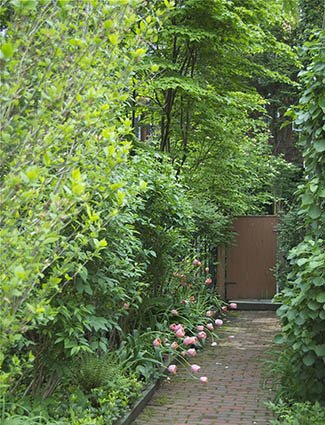
This intimate and secluded quarter-acre property is located on a cul-de-sac off a busy Cambridge street. Muffin’s Garden is a hidden garden, that evolved over 50 years—the fruit of collaboration and work of many hands—and first glimpses come only after opening a gate.
The garden is shady, serene, and peaceful. Careful selection of the plant material, the arrangement of a series of rooms with natural flow from one to another, attention to stone (walls, terraces, paths) and water (pool, fountain), the blending of old trees (yew, pines, katsura) with new (Japanese maple, magnolia, stewartia) and the placement of intriguing sculptures are all special features of the garden. Ornamental pots, shallow steps, or the break in the wall gracefully mark the transitions between the areas. From the pool and fountain with quietly dripping water, a raked view guides the eye up to the woods and encourages exploration of the garden’s deeper reaches.
For more photographs and information on the garden, here is the link to the report that CP&GC submitted to the Smithsonian.
